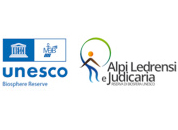Home / Living the Biosphere / News
The Fiavé peat bog
Since 2011, the pile-dwelling village of Fiavé has been awarded the 2011 the UNESCO recognition of Cultural Heritage Site. It is a serial site, that is, it belongs to the list of 111 "prehistoric pile-dwelling sites in the Alps". It is considered as particularly interesting among about a thousand known sites that extend over the territories of 6 countries (Switzerland, Austra, France, Italy, Germany and Slovenia).
The settlement is located in the Ledrensi and Judicaria Alps Biosphere Reserve, on the shores of what was once Lake Carrera, formed about 15,000 years ago, where man has lived since prehistoric times (9,000 years ago). The basin extended for about 1,300 meters in length and 800 in width. This lake of glacial origin, over time, has been progressively filled by the vegetation on the banks, accumulating towards the centre of the lake, occupying the sheet of water until it invades it almost totally. During this long process, the accumulation of the remains of dead plants turns into a coal. The considerable peat deposit makes the lake reach its present peat bog stage.
This deposit, found in the Carera basin, is nothing more that a fossil fuel made up of decomposing plants: roots, mosses, ferns, reeds and algae, which in the presence of a very humid atmosphere have undergone a carbonization process. This leaf soil, immersed in water with little oxygen, has guaranteed the exceptional conservation of hundreds of poles of the prehistoric houses. The first discoveries were made in the XIX century when the Fiavé peat bog was dug to extract the peat, which was used as fuel and, later, as fertilizer.
The Fiavé peat boat is generally better known for its preserves archaeological heritage than for its naturalistic aspects. Actually, this protected area of interest, thanks to the lack of air, allows an extraordinary conservation of the finds, especially organic ones.
The Fiavé biotope, however, was also established in consideration of its great naturalistic value: the flora is very interesting and extraordinarily articulated. Thanks to the changing soil conditions, there are a large number of different plant communities, some of which are very rare. The peaty-marsh vegetation, which reeds and sedge alternates with that of the low peat bogs, the wet meadows, the ash willow bushes and buckthorn. Among the rare species there is the liparid, a small plant of the Orchidaceae family, and the whitewater lily, which has floating leaves on the water and large white flowers. The great variety of environments present in the biotope reflects on the fauna, determinating its remarkable prosperity and diversification.
First of all, the Fiavé peat bog is an important breeding ground for amphibians, including the common toad, the green frog, and the mountain frog. Secondly, there are also numerous breeding species of aquatic fauna: among these, the mallard, the wagtail, the marsh warbler, the Eurasian reed warbler, the great reed warbler and the common reed bunting.
Since 1988 the territory located at the foot of Mount Cogorna has become a protected natural area under the name of Fiavé Biotope, therefore characterized by a high level of biodiversity and an exceptional landscape, rich in rare and delicate species.




